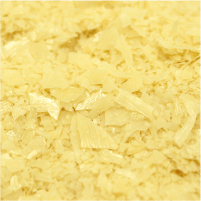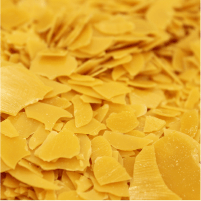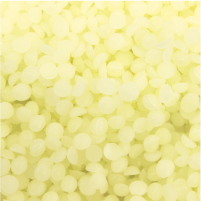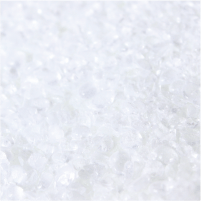Mention wax and you may think of car wax or hair wax. However, the definition of wax is as follows: “Organic matter with an alkyl group that is solid or semisolid at normal temperature, melts at close to 100℃ from normal temperature, and has a low melting viscosity.”
The word is said to derive from the Anglo-Saxon word “weax”, which refers to beeswax.

The long history of wax can be traced back to 4200 B.C.E. In ancient Egypt, beeswax collected from the hives of honeybees was used to preserve mummies and as a sculpting material, etc.
In modern society, the uses for wax have broadened to include use in countless industrial goods and daily necessities such as cosmetics, chemical paper, printing ink, tires, pencils, paper cups, and inked ribbons.









Carnauba Wax is a natural wax collected from carnauba palm trees originating from South America. Its characteristics are a fine polish and sharp melting/congealing point. Thanks to its versatility, wax is used in an extremely wide range of industries.
View product introduction
This wax is a relatively scarce material whose international transactions are regulated by the Washington Convention. We refine it in-house, having collected the shrub known as candelilla, which is spread across the Chihuahuan desert region of northern Mexico.

This is a natural wax obtained by heating/fusing the hives of honeybees. In the distant past it was used since the time of ancient Egypt, and today it is used for a wide range of purposes where replacement with chemical synthetics is difficult.
View product introduction
Montan Wax is extracted from lignite contained in bitumen (hydrocarbon compound), which is a cracked component of vegetation that grew thickly in the Tertiary period. It is used in inks and casting wax, etc. mainly containing long-chain esters.
Petroleum Wax accounts for approximately 87% of the worldwide wax market. This hydrocarbon of solids found in petroleum is used for various purposes and is classified into various types according to its raw materials and refining method, including paraffin wax, microcrystalline wax and petrolatum.
FT wax (Fischer-Tropsch wax) that S. KATO & CO. mainly handles is Sasol Wax manufactured by South Africa’s Sasol Chemicals. with natural gas as a raw material. With its high melting point and low melting viscosity, this FT wax has hardness with excellent heat stability.
View product introduction
Polyolefin Wax, whose properties change depending on the manufacturing method, is generally classified into polyethylene wax, which is a low molecular weight product of polyethylene, and polypropylene wax, which is a low molecular weight product of polypropylene.